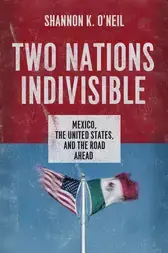China Strategy Initiative
At the Shangri-La dialogue in Singapore last week, U.S. Secretary of Defense Pete Hegseth said that the United States would be expanding its defense partnership with India. His statement was in line with U.S. policy over the last two decades, which, irrespective of the party in power, has sought to cultivate India as a serious defense partner.
The U.S.-India defense partnership has come a long way. Beginning in 2001, the United States and India moved from little defense cooperation or coordination to significant gestures that would lay the foundation of the robust defense partnership that exists today—such as India offering access to its facilities after 9/11 to help the United States launch operations in Afghanistan or the 123 Agreement in 2005 that paved the way for civil nuclear cooperation between the two countries. In the United States, there is bipartisan agreement that a strong defense partnership with India is vital for its Indo-Pacific strategy and containing China. In India, too, there is broad political support for its strategic partnership with the United States given its immense wariness about its fractious border relationship with China. Consequently, the U.S.-India bilateral relationship has heavily emphasized security, with even trade tilting toward defense goods.
Despite the massive changes to the relationship in the last few years, and both countries’ desire to develop ever-closer defense ties, differences between the United States and India remain. A significant part of this has to do with the differing norms that underpin the defense interests of each country.
The following Council on Foreign Relations (CFR) memos by defense experts in three countries are part of a larger CFR project assessing India’s approach to the international order in different areas, and illustrate India’s positions on important defense issues—military operationalization, cooperation in space, and export controls—and how they differ with respect to the United States and its allies.
Sameer Lalwani (Washington, DC) argues that the two countries differ in their thinking about deterrence, and that this is evident in three categories crucial to defense: capability, geography, and interoperability. When it comes to increasing material capabilities, for example, India prioritizes domestic economic development, including developing indigenous capabilities (i.e., its domestic defense-industrial sector). With regard to geography, for example, the United States and its Western allies think of crises, such as Ukraine, in terms of global domino effects; India, in contrast, thinks regionally, and confines itself to the effects on its neighborhood and borders (and, as the recent crisis with Pakistan shows, India continues to face threats on its border, widening the geographic divergence with the United States). And India’s commitment to strategic autonomy means the two countries remain far apart on the kind of interoperability required by modern military operations. Yet there is also reason for optimism about the relationship as those differences are largely surmountable.
Dimitrios Stroikos (London) argues that India’s space policy has shifted from prioritizing socioeconomic development to pursuing both national security and prestige. While it is party to all five UN space treaties that govern outer space and converges with the United States on many issues in the civil, commercial, and military domains of space, India is careful with regard to some norms. It favors, for example, bilateral initiatives over multilateral, and the inclusion of Global South countries in institutions that it believes to be dominated by the West.
Konark Bhandari (New Delhi) argues that India’s stance on export controls is evolving. It has signed three of the four major international export control regimes, but it has to consistently contend with the cost of complying, particularly as the United States is increasingly and unilaterally imposing export control measures both inside and outside of those regimes. When it comes to export controls, India prefers trade agreements with select nations, prizes its strategic autonomy (which includes relations with Russia and China through institutions such as the Shanghai Cooperation Organization and the BRICS), and prioritizes its domestic development. Furthermore, given President Donald Trump’s focus on bilateral trade, the two countries’ differences will need to be worked out if future tech cooperation is to be realized.
by Manjari Chatterjee Miller
June 5, 2025
China Strategy Initiative


 Online Store
Online Store


